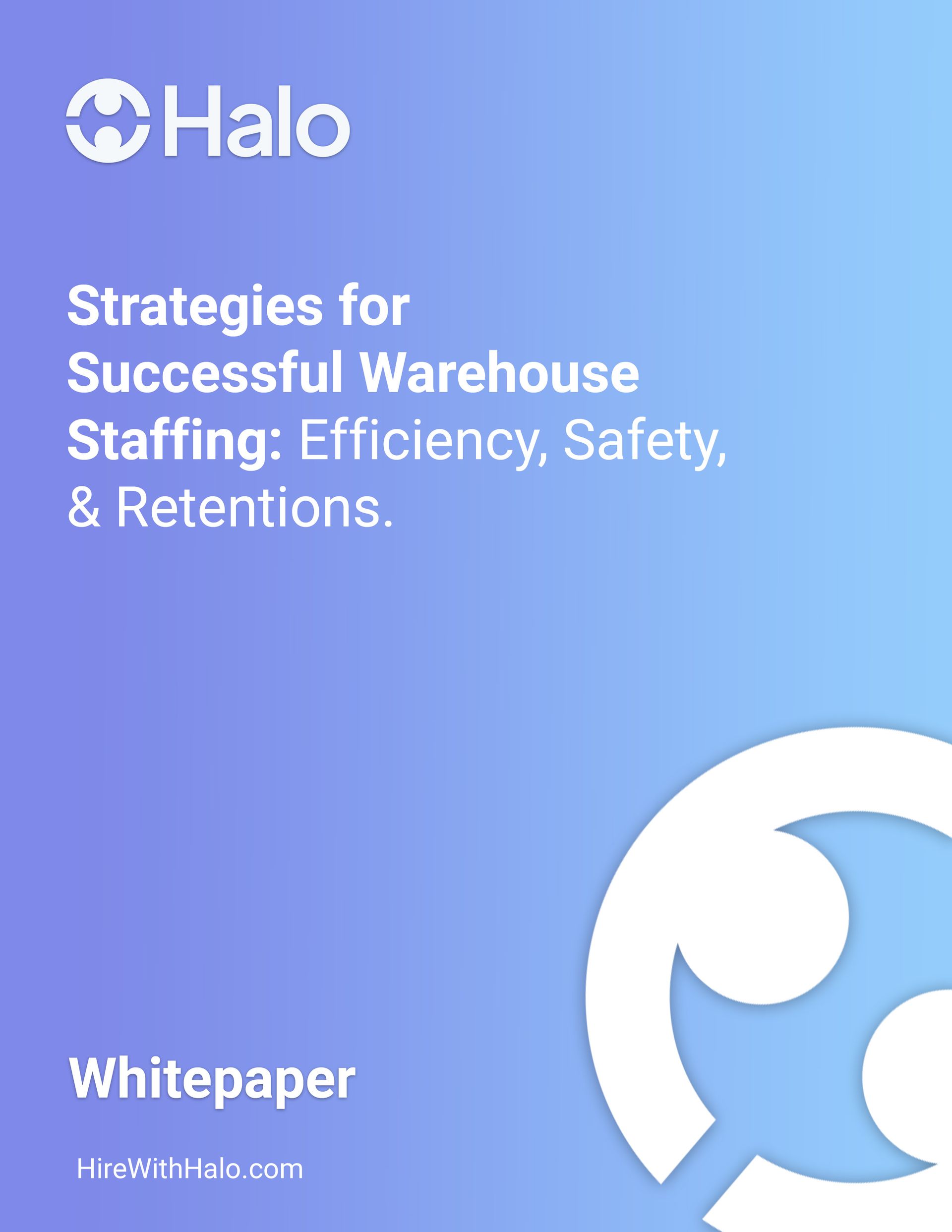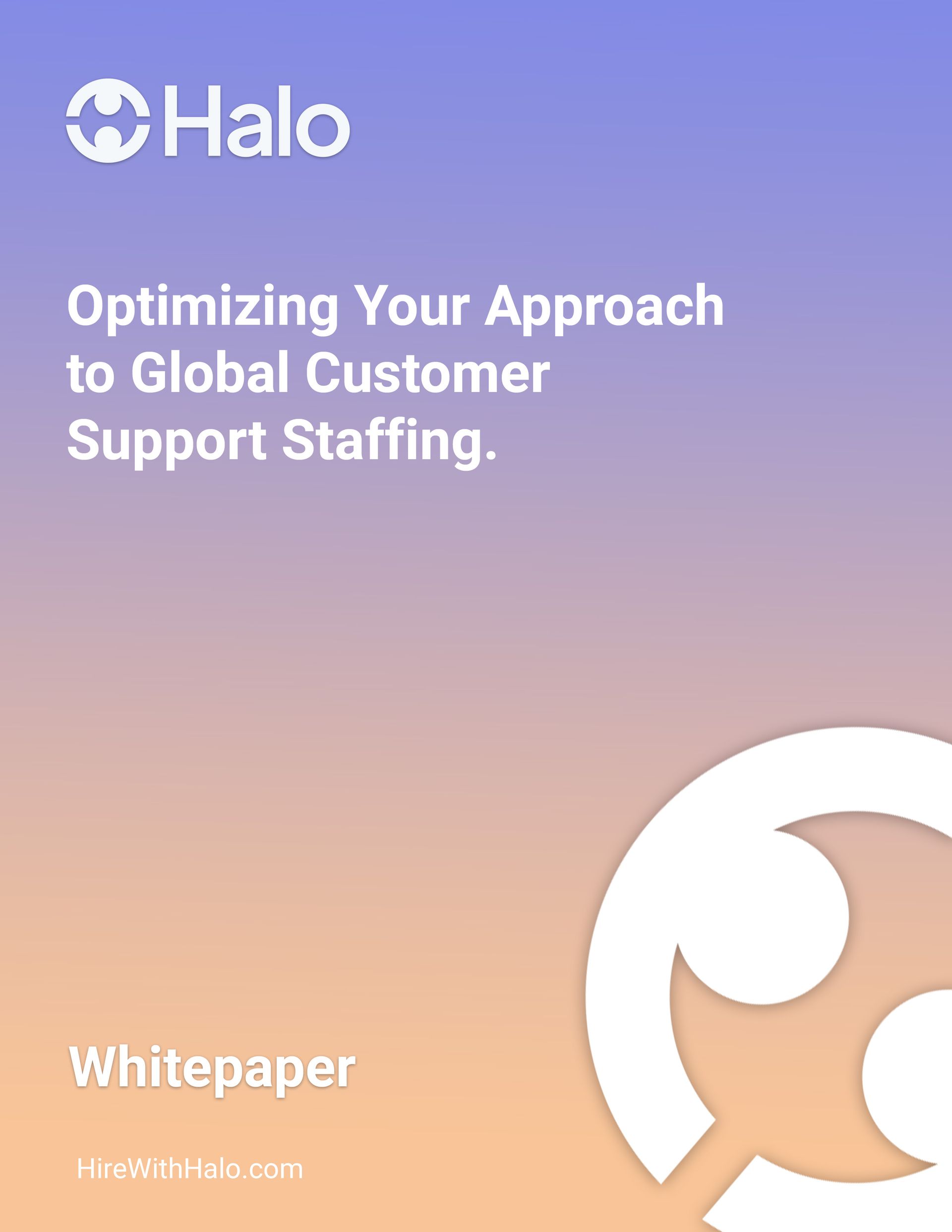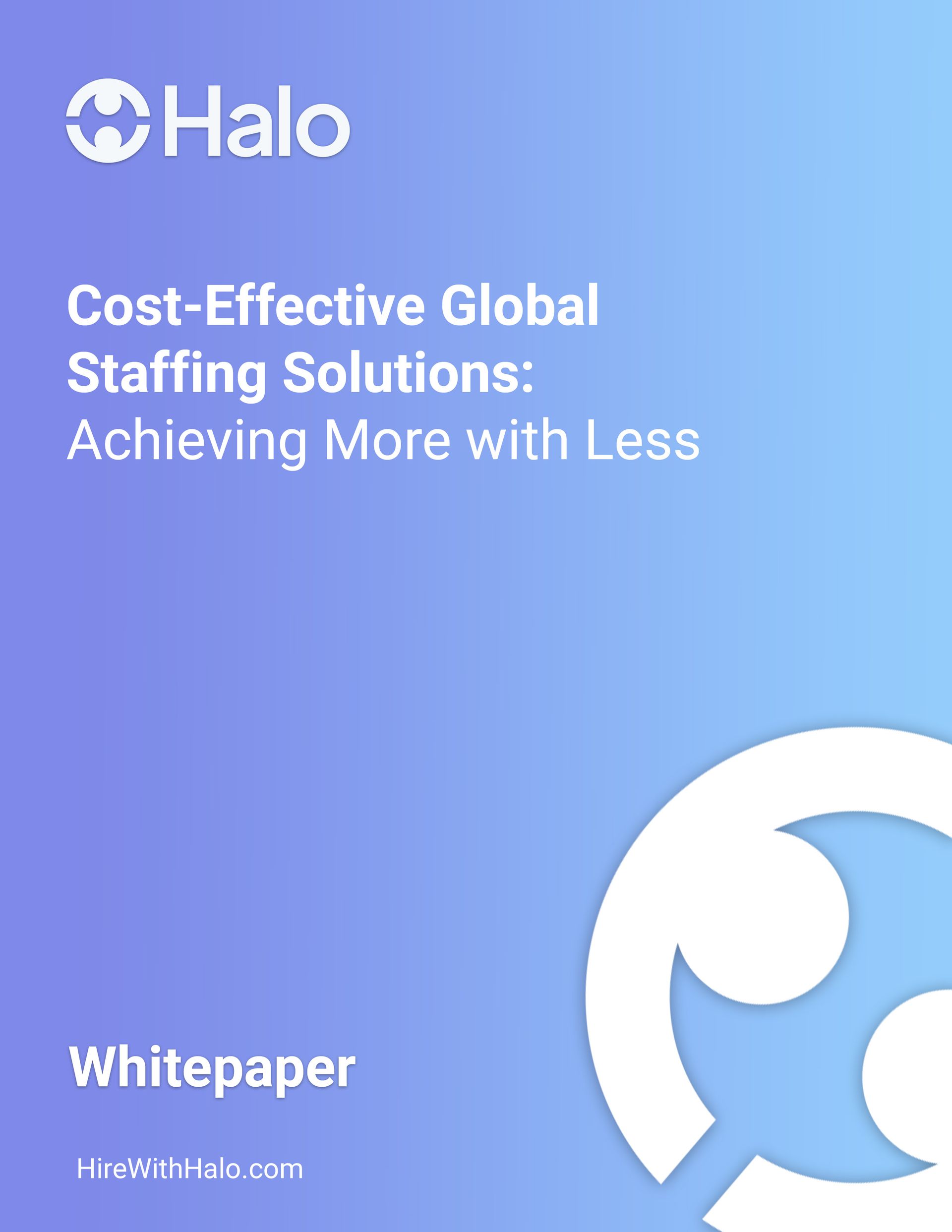
Strategies for Successful Warehouse Staffing:
Efficiency, Safety, and Retention
Overview
This whitepaper offers a comprehensive guide for optimizing warehouse staffing strategies in the face of the evolving global commerce landscape. It emphasizes the critical roles of efficient workforce planning, stringent safety standards, advanced technology integration, and the cultivation of a positive workplace culture. With a focus on ensuring warehouses operate as effectively as possible while maintaining a safe environment for employees and fostering a workplace that promotes retention, the document outlines practical strategies and actionable insights. From leveraging predictive analytics for workforce planning to implementing safety protocols and enhancing employee engagement, this whitepaper serves as an essential resource for warehouse managers and business leaders aiming to navigate the complex staffing challenges and position their operations for sustainable growth and success.
Introduction
In the rapidly evolving landscape of global commerce, warehouses are more than just storage facilities; they are the backbone of supply chains, ensuring the smooth flow of goods from suppliers to consumers. However, the critical operations within these hubs face a spectrum of challenges, paramount among them being staffing. The complexities of warehouse staffing extend beyond mere numbers; they encompass maintaining high levels of efficiency and safety while ensuring robust employee retention. This whitepaper delves into comprehensive strategies for optimizing warehouse staffing, addressing the pivotal role of workforce planning, compliance with safety standards, leveraging technology, and fostering a positive workplace culture. As commerce continues to globalize and consumer demands escalate, the strategies outlined here will empower warehouse managers and business leaders to navigate staffing challenges with foresight and flexibility.
Optimizing Workforce Planning
Effective workforce planning is the cornerstone of operational success in warehouses. It's a strategic approach that ensures the right number of staff, with the right skills, are in the right place, at the right time. This balance is crucial for meeting operational demands efficiently and cost-effectively. Key to this process is the ability to forecast demand accurately, taking into account historical data, seasonality, and market trends. This forecasting enables warehouse managers to align staffing levels with anticipated workloads, maximizing efficiency and minimizing idle time.
- Flexible Staffing Models: The dynamic nature of warehouse operations, influenced by factors such as seasonal peaks, promotional campaigns, and unpredictable market shifts, demands flexibility in staffing. On-demand labor pools, for example, allow warehouses to scale workforce up or down based on current needs, providing a buffer against sudden demand spikes or downturns. Cross-training employees is another strategy that enhances staffing flexibility, enabling the redeployment of workers across different roles as needed, thereby ensuring continuous productivity.
- Strategic Staff Allocation: Beyond numbers, effective workforce planning involves strategic staff allocation. This includes assigning tasks based on workers' strengths and skills, optimizing shift patterns to match peak productivity times with operational demands, and ensuring that teams are structured to foster collaboration and efficiency.
Leveraging Technology in Workforce Planning:
The advent of technology has brought about transformative changes in how warehouses approach workforce planning. Advanced scheduling software and predictive analytics are at the forefront of this revolution, offering unprecedented accuracy in forecasting staffing needs. These tools analyze historical data and current trends to predict future requirements, enabling warehouse managers to make proactive adjustments to their staffing strategies.
- Integration with Inventory Management: A key aspect of leveraging technology in workforce planning is integrating staffing tools with inventory management systems. This integration ensures a seamless alignment between labor requirements and operational needs. For instance, if the inventory management system anticipates a surge in stock arrivals or dispatches, the workforce planning tool can automatically suggest adjustments to staffing levels, ensuring that the warehouse is adequately prepared to handle the workload.
- Enhancing Operational Efficiency: Technology also facilitates more efficient operations through automation and data analytics. Automated systems can handle repetitive tasks, freeing up human workers for more complex activities that require judgment and expertise. Meanwhile, data analytics can identify patterns and inefficiencies in workflows, providing insights that can be used to streamline operations and improve overall productivity.
In conclusion, optimizing workforce planning and leveraging technology are fundamental strategies for addressing the staffing challenges in warehouses. By forecasting demand accurately, adopting flexible staffing models, and integrating advanced technological tools, warehouse managers can enhance efficiency, safety, and employee retention. The following sections will explore additional strategies, including safety compliance and fostering a positive workplace culture, to further support successful warehouse staffing.
Improving Employee Retention
In the fast-paced environment of warehouse operations, the human element remains irreplaceable. High employee turnover not only disrupts the seamless execution of tasks but also imposes additional costs related to recruitment and training. Cultivating a workplace that values and retains its workforce is essential for sustained success.
Strategies for Enhancing Retention:
Competitive Compensation: Offering attractive remuneration packages that reflect the demands of warehouse work and compare favorably with industry standards. This financial recognition of employees' contributions is fundamental to retention.
- Opportunities for Career Advancement: Creating clear pathways for professional growth within the organization encourages employees to view their role in the warehouse as part of a long-term career, rather than a temporary job.
- Recognizing and Rewarding Contributions: Implementing programs to acknowledge individual and team achievements fosters a sense of belonging and appreciation. Recognition can take many forms, from formal awards to informal gestures of thanks, but the impact on morale and loyalty is profound.
Creating a Positive Workplace Culture
In the heart of every successful warehouse operation lies not just a commitment to efficiency and safety, but also the cultivation of a positive workplace culture. Such a culture fosters not only employee retention but also drives engagement and satisfaction. Open communication, a sense of belonging, and work-life balance are foundational to creating an environment where employees feel valued and understood.
- Encouraging Open Communication: Establishing channels for open dialogue between staff and management empowers employees to share ideas, concerns, and feedback. This transparency can lead to innovative solutions for operational challenges and makes employees feel respected and valued.
- Fostering a Sense of Belonging: Building a community within the warehouse where every employee feels part of a team is crucial. Activities like team-building exercises, celebrating achievements, and recognizing cultural diversity enhance team cohesion and create a supportive atmosphere.
- Promoting Work-Life Balance: Recognizing employees as individuals with lives outside of work is essential. Flexible scheduling, understanding personal needs, and providing ample time off ensure employees don’t feel burnt out, contributing to their overall well-being and job satisfaction.
- Involving Employees in Decision-Making: Giving workers a voice in decisions that affect their work and environment can significantly boost their commitment and loyalty. It fosters a sense of ownership and pride in their contributions to the company’s success.
- Providing Regular Feedback: Constructive feedback and recognition of hard work play a vital role in motivating employees. Regular performance reviews, coupled with acknowledgment of milestones and achievements, reinforce positive behaviors and encourage personal and professional growth.
Conclusion
Warehousing is a critical component of the global supply chain, a sector experiencing rapid evolution and growing challenges. Successful warehouse staffing transcends the mere filling of positions. It requires a holistic approach that harmonizes efficient workforce planning, rigorous adherence to safety standards, the innovative application of technology, and the nurturing of a positive workplace culture.
Efficient workforce planning ensures that operational demands are met with precision, leveraging both human insight and technological advancements. Safety, a non-negotiable aspect of warehouse operations, relies on both compliance with regulations and the integration of technological innovations to mitigate risks. Meanwhile, strategies aimed at improving employee retention are critical for maintaining a stable and experienced workforce, capable of upholding the high standards necessary in a competitive market.
At the heart of these strategies lies the creation of a positive workplace culture, which is essential for fostering a committed and satisfied workforce. By encouraging open communication, promoting work-life balance, involving employees in decision-making, and providing regular feedback, warehouses can create an environment where employees are motivated to excel.
By embracing these comprehensive strategies, warehouses not only navigate the complexities of today's dynamic market environment but also position themselves for sustainable growth and success. In doing so, they not only meet the immediate needs of their operations but also lay the groundwork for future advancements, ensuring that they remain at the forefront of the warehousing and logistics industry.

Slide title
Write your caption hereButton
Slide title
Write your caption hereButton
Slide title
Write your caption hereButton
Find the Right Candidate for Any Role.
Whether you're in the market for your next engineer, bookkeeper, or customer service representative, Halo has you covered. Halo can help you fill any open role.

Ashley B.
Sr. Content Marketing Manager
9 Years of Experience



